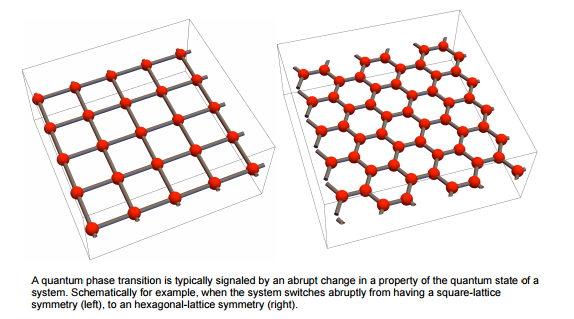New research explores when quantum systems get critical

An international team of scientists from China and Australia have released research that has probed how quantum matter changes when it makes a 'quantum phase transition'.
The collaborators, Professor Haohua Wang's group in Zhejiang University, China, Professor Jason Twamley at the Centre for Engineered Quantum Systems, Macquarie University, and Professor Mang Feng's group for Bound-System Quantum Information Processing at Wuhan Institute of Physics and Mathematics, Chinese Academy of Sciences, have published their latest research result experimentally exploring a quantum phase transition.
Exploring quantum phase transitions experimentally has, until recently, been thought to be impossible as most theories predict that one requires very large light-matter coupling strengths – so high that experiments have so far been unable to reach them. This stumbling block was circumvented in this work by continually driving the system with microwave radiation.
In the team's experiment they used a superconducting quantum chip containing four quantum bits (qubits), coupled to an integrated microwave superconducting cavity – essentially an electrical quantum superconducting circuit. By continually driving the electrical circuit and carefully measuring the quantum state of the qubits the researchers were able to observe the abrupt change from a 'normal phase' to a 'superradiant phase', of the quantum chip as they swept through the quantum phase transition.
"In the ordinary world we are all familiar with classical phase transitions when matter changes from one type of state to another, for example when solid water – ice – turns to liquid if we heat it or when we apply pressure to the ice when we ice skate," said Professor Jason Twamley.
"Researchers have been intrigued for decades by the quantum counterpart – or a quantum phase transition – where the quantum state of matter abruptly changes as you slowly change a quantity. A typical case is where the symmetry of the quantum state changes abruptly, for example, when it changes from a configuration with four-fold symmetry to one with six-fold symmetry," said Professor Twamley.
"It is suspected that quantum phase transitions also play a crucial role in various materials whose properties we wish to understand – for example, high temperature superconductors, so we can engineer them again to suit technology. This experiment is a first step towards a deeper understanding of the curious features of the quantum phase transition," said Professor Mang Feng.
More information: "Exploring the quantum critical behaviour in a driven Tavis–Cummings circuit." Nature Communications 6, Article number: 7111 DOI: 10.1038/ncomms8111
Journal information: Nature Communications
Provided by Macquarie University



















